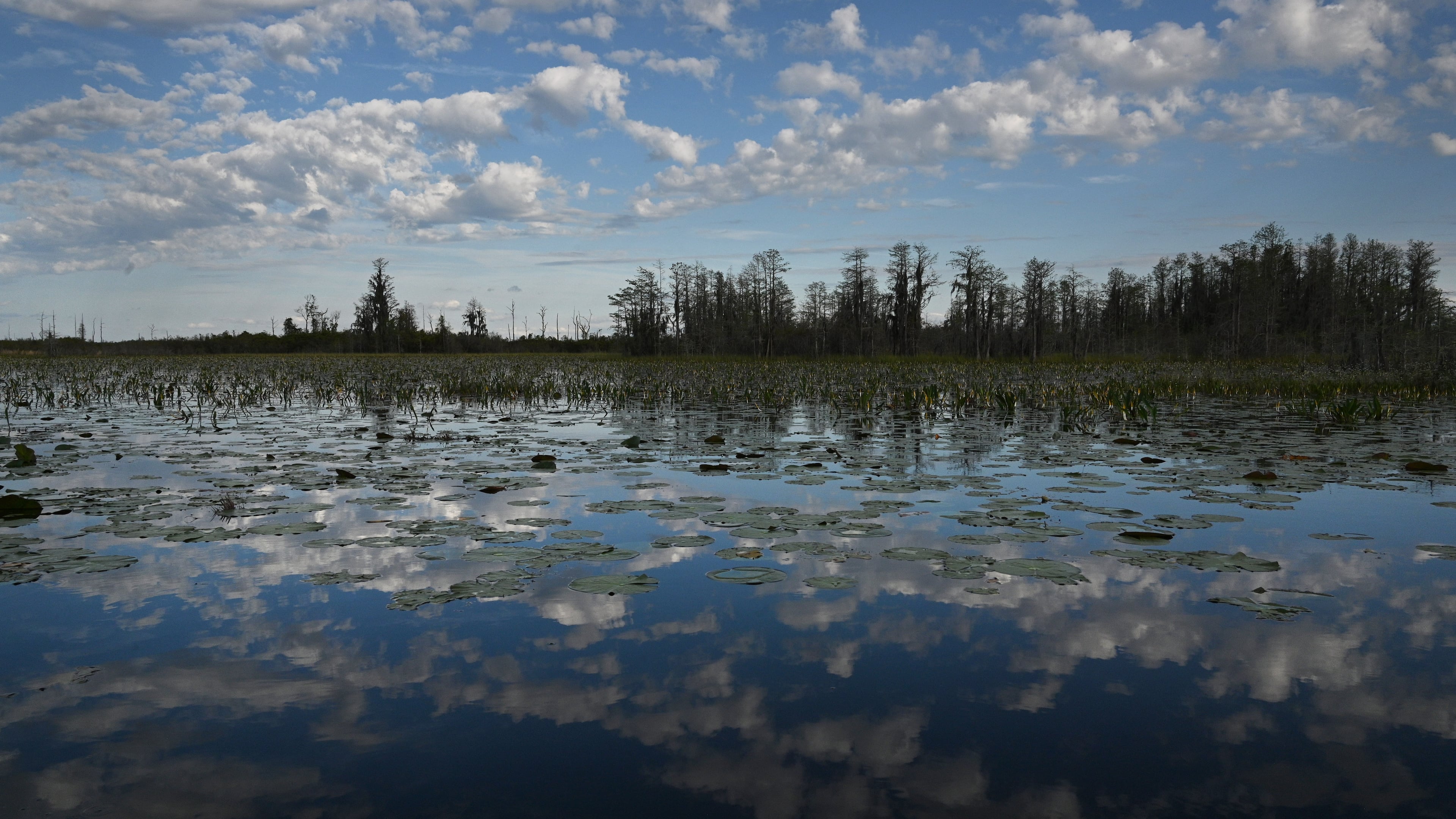Okefenokee is OK ... for now

I was about 40 miles south of the Okefenokee National Wildlife Refuge when I learned that the six-year battle to defend the nation’s largest blackwater swamp had come to an end.
My immediate reaction was surprise. I couldn’t believe it was over. In 2019, as The Atlanta Journal-Constitution’s environmental reporter, I had launched our coverage of what would become a standoff between environmentalists, select politicians and lots of regular folks determined to protect the Okefenokee and Twin Pines Minerals, the Alabama company that planned to mine titanium on Trail Ridge, the mineral-rich boundary at the swamp’s eastern edge.
Following every twist and turn of what many Georgians considered an existential threat to one of the state’s natural wonders reminded me of the saying among reporters who cover the beat: Environmental news doesn’t break, it trickles.
Still, it was quickly apparent that much of the early wrangling over the proposed mining project had more to do with protecting economic and political interests than relying on science that showed the potential for damage or heeding the concerns of people who feared the swamp would be harmed.

After I moved into a new role as columnist, I continued following our coverage and had all but given up on the possibility that any local, state or federal authority would take a strong and unwavering stand for the swamp. As it turned out, my lack of faith wasn’t entirely unfounded.
It wasn’t a giant wave of political will that saved the swamp. Local government officials had long supported the alleged economic boost that mining would bring to the area. Georgia Gov. Brian Kemp never took a public position on the swamp, and the federal government, under the first term of Donald Trump, passed the Navigable Waters Protection Rule — giving a boost to the mining proposal by removing it from federal oversight.
In the end, it was members of the public, philanthropists and a nonprofit that preserved the Okefenokee for future generations. The Conservation Fund acquired all of Twin Pines’ land holdings and mining rights for almost $60 million, halting the project.
In a reflective mood, I called Rena Peck, executive director of Georgia Rivers, who had once offered to take me out on the swamp. She believes in the swamp’s transformative power to turn visitors into advocates for its protection. I didn’t take her up on the offer, but somehow I still feel as protective of the swamp as its most ardent defenders.
Peck said the sand along Trail Ridge that was once gleaming white and prepped for mining titanium, a mineral used in everything from cosmetics to paint, is now overgrown. “It just shows that the swamp is forgiving,” she said. “I was relieved, but I also thought, ‘This is still very fragile.’”
I was relieved as well but also felt the need for caution. About 30,000 acres of Trail Ridge remain unprotected and are still ripe for mining. According to Peck, this land is closer to the swamp and lower in elevation, which could pose even greater risks to the Okefenokee Swamp.

So while it’s important to celebrate the win, it’s also important to never forget.
This was the second time in 30 years that a major mining project threatened to harm the Okefenokee. How many more of these projects need to crop up before we decide this state treasure — one now being considered as a UNESCO World Heritage Site — is worthy of permanent protection?
The upside to this most recent battle is that it creates a pathway to protect the rest of Trail Ridge. And it has once again brought more national attention to the swamp.
“It takes a crisis to bring people together, and the silver lining is that the mining threat made the Okefenokee famous,” Peck said.
Money is flowing into the area to develop more infrastructure for tourism. Though he has stayed mum on mining, Gov. Kemp in May 2024 approved $2.5 million in state funds for the Okefenokee Experience.
These infrastructure projects include a nature center in Waycross that shows the diversity of plants and wildlife in the swamp. There are also plans for a cultural history and community center in Folkston that will celebrate the rich history of Native Americans who inhabited the area before European settlers and whose language, interpreted by Europeans, gives the swamp its name.
The center will also detail the efforts of 200 Black Americans who helped establish the refuge in 1937 under a New Deal program called the Civilian Conservation Corps.
An additional piece of infrastructure in the works is a dark sky observatory in Fargo that could become a future research hub.

Peck said she has taken down the “Stop the Mine” signs, but she warns against thinking of Twin Pines as a single bad actor that might have caused harm to the swamp through its mining process.
Even a good actor, she said, can foul things up for the fish, flora, fauna and folks who consider the swamp their home.
It is important to keep the momentum going, said Peck.
It is important to keep pushing the state legislature to pass a version of the Okefenokee Protection Act that permanently bans mining along Trail Ridge.
And it is important to never forget the significance of the swamp, what it means to the people of this state and all the lessons we have learned in trying to protect it.
Read more on the Real Life blog (www.ajc.com/opinion/real-life-blog/) and find Nedra on Facebook (www.facebook.com/AJCRealLifeColumn) and X (@nrhoneajc) or email her at nedra.rhone@ajc.com.



